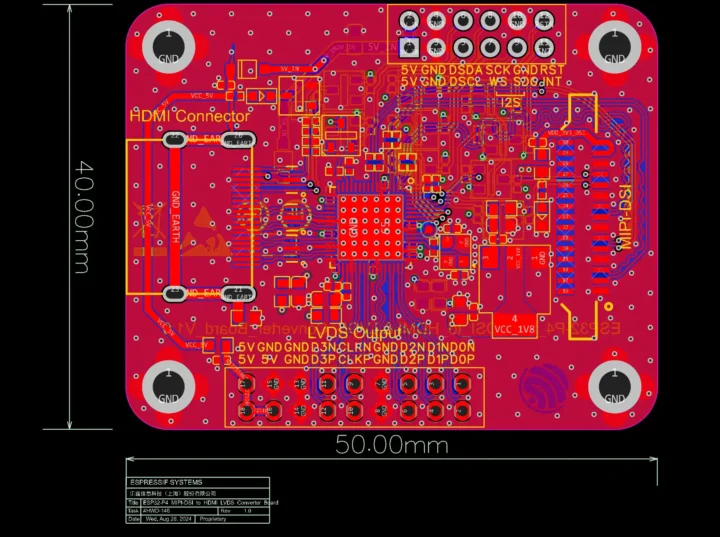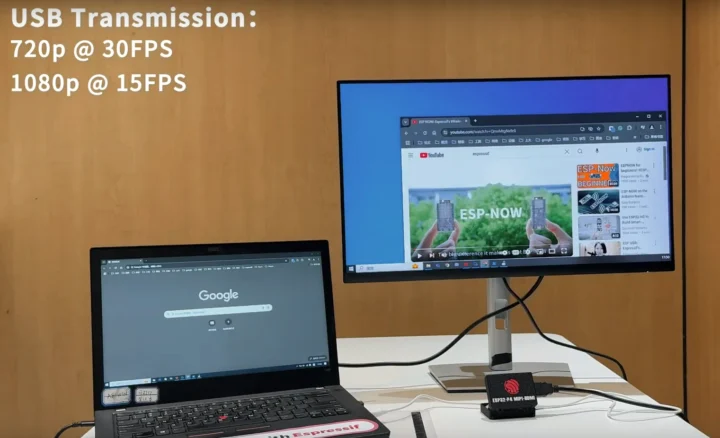ESP-HDMI-Bridge is an ESP32-P4-based HDMI streaming adapter based on Lontium Semiconductors’s LT8912B MIPI-DSI to HDMI bridge chip outputting MIPI-DSI video signal of ESP32-P4 to HDMI devices.
It allows the user to connect a computer to an HDMI display or projector through USB, Ethernet, or WiFi, or use it directly as a digital signage player or live dashboard connected to an HDMI display.
The current solution is based on the ESP32-P4-Function-EV-Board connected via its MIPI DSI connector to a 50x40mm board with the LT8912B bridge, a MIPI DSI input connector, LVDS and HDMI video outputs, and a 12-pin header with I2C, I2S audio, etc., with everything housed in a plastic enclosure.
The best is to watch the video below, which shows various demos:
- USB to HDMI up to 720p30 or 1080p15
- Ethernet to HDMI
- WiFi to HDMI up to 1080p40 using the ESP32-C6 2.4 GHz WiFi 6 module on the ESP-P4 evaluation board; The company also highlights support for dual-band WiFi 6 with the upcoming ESP32-C5
- Video playback of H.264 videos from microSD card up to 1080p60
- Live dashboard showing data from the Internet or sensors
The ESP-HDMI-Bridge is not available right now, but the company shared information that would allow people to reproduce or augment the setup. You’ll find hardware design files and basic instructions on OSHWLab, while the code for the latest ESP32-P4 EVB BSP is hosted on GitHub.

You’ll find the code specific to the MIPI CSI to HDMI converter board in the esp-bsp/components/lcd/esp_lcd_lt8912b/ directory of the BSP. Four resolutions can be selected with HDMI:
- 800×600 @ 60Hz
- 1280×720 @ 60Hz
- 1280×800 @ 60Hz
- 1920×1080 @ 30Hz
The color format is set to RGB888 with HDMI, and the RGB565 option is not available.

It’s a little disappointing that the more common 1080p60 resolution is not supported over USB or WiFi, but in any case, I’d soon expect low-cost ESP32-P4 HDMI streaming adapters to hit the market.

Jean-Luc started CNX Software in 2010 as a part-time endeavor, before quitting his job as a software engineering manager, and starting to write daily news, and reviews full time later in 2011.
Support CNX Software! Donate via cryptocurrencies, become a Patron on Patreon, or purchase goods on Amazon or Aliexpress






